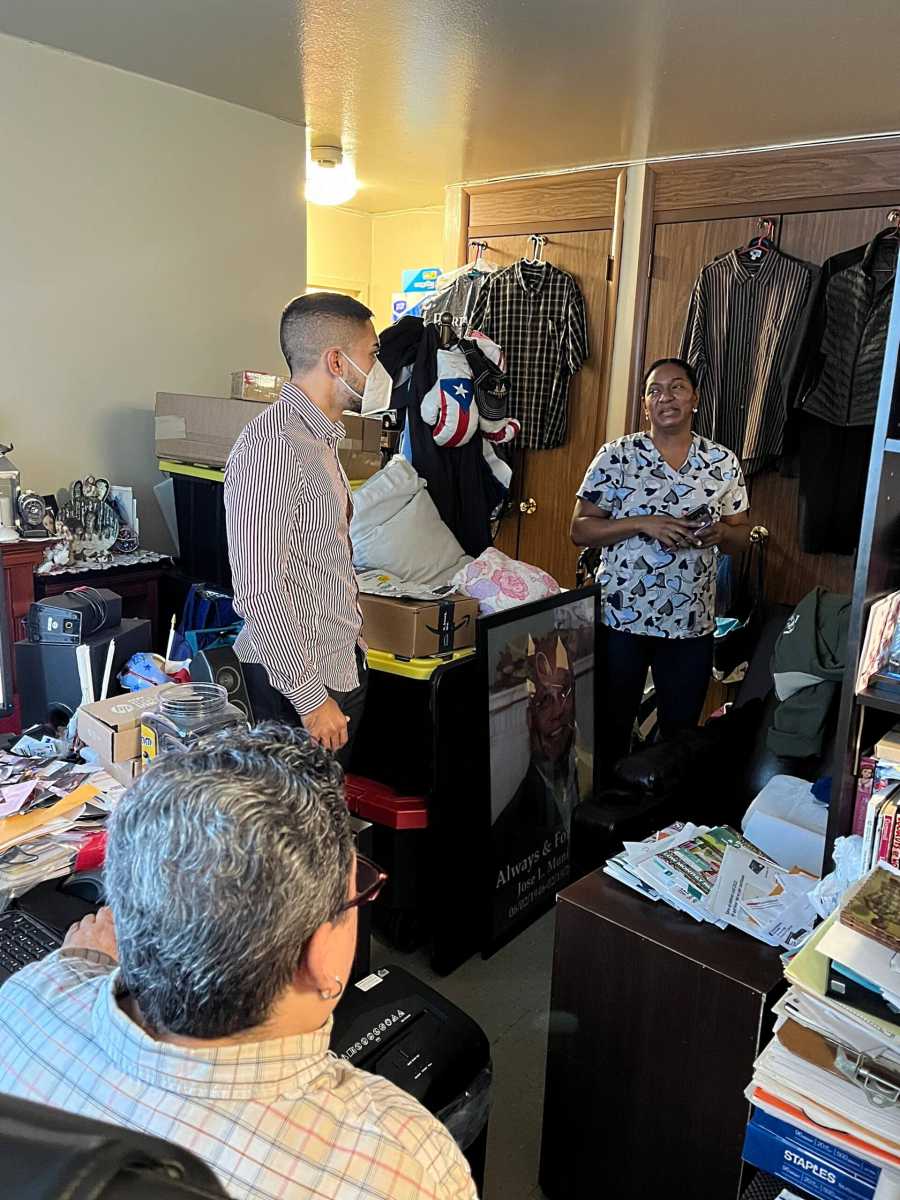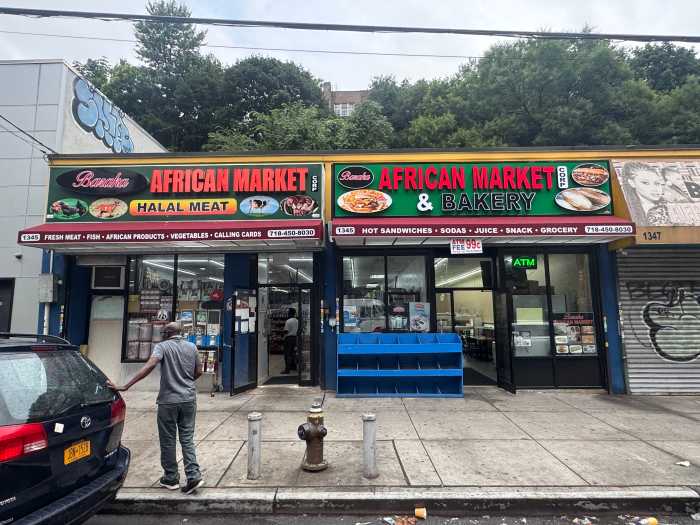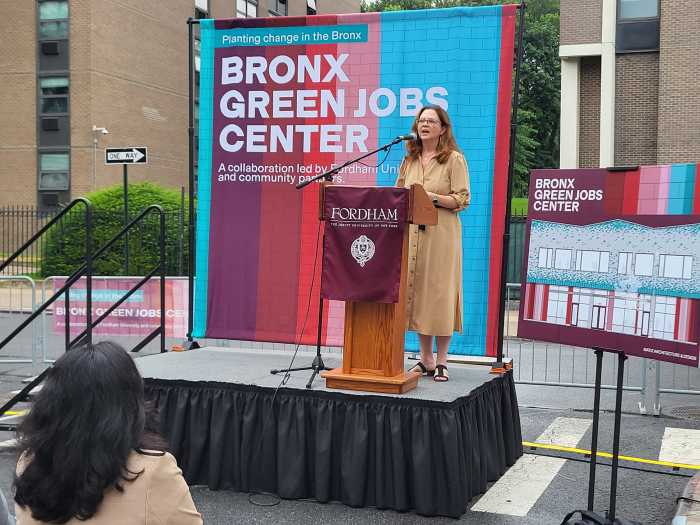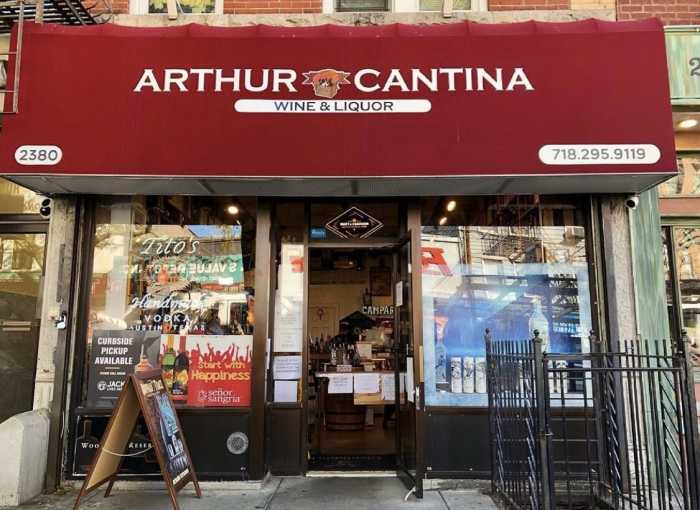Amid low pay and long hours leading to a systemic collapse of home care work in New York state, lawmakers are hoping to ensure funding for the Fair Pay for Home Care Act is included in Gov. Kathy Hochul’s final state budget proposal.
Homecare wages could see a 150% minimum wage increase if the legislation were passed by the state, pushing workers’ wages between $19.80 and $22.50, which would boost laborers into a livable wage.
For state Assemblymember Kenny Burgos, who, on Friday in Soundview, shadowed Ivelisse Vargas — a Bronx home care worker who cares for a longtime pastor, tenant leader and Bronx LGBTQ community fixture Rev. Carmen Hernandez — getting that $2.5 billion minimum wage legislation through the finish line is a priority.
Hernandez, still a power organizer and labor uniter, requires the use of a scooter due to osteoporosis, a disease that gradually thins and weakens the bones over time.
“You always have the nature of competing interests (in the Assembly) and when some people hear billion with a ‘B’ … in their eyes it comes at a cost of something they may not resonate with, that’s a priority for them in the state. It’s a priority for the Bronx,” said Burgos, a Soundview progressive who represents one of the nation’s most disadvantaged districts. “In that same breath, a lot of these home care workers and seniors, that are dependent on home care workers, tend to come from low-income communities and care for two or more individuals in the Bronx.”
Currently, more than 40% of New York’s home care workers live in or near poverty due to chronically low wages — 57% rely on public assistance. New York is expected to see massive growth in its aging population with estimates of a 25% boom in the 65-and-over population and a 75% spike in the age 85 and over bracket.
“Ageism is reflected in care strategies that ignore a patient’s values and ideas about what constitutes a productive life,” age advocacy group NYC Grey Panthers told the Bronx Times. “Too often, attitudes such as ‘these patients are old and near the end anyway’ or ‘there’s not much we can do to help them’ prevail.”
Despite recent momentum that includes a groundswell of advocacy in the Legislature and on the ground, the Fair Pay Act — which also includes a plan to set a minimum Medicaid reimbursement rate for providers, ensuring that home care agencies’ administrative costs and home care workers themselves are properly paid — has stalled in recent years. Sen. Rachel May, a Syracuse Democrat, the bill’s sponsor, argues that higher pay will help keep people in the field, and also recognize them for the challenges they’ve faced during the pandemic.
Opponents contend the Fair Act legislation is costly and does not address deeper problems in the state’s home care industry. Hochul’s budget proposal does not include funding for the legislation.
The budget will be negotiated by state Assembly and Senate leaders with Hochul, and must be finalized by April 1.
A trend familiar to most industries and labor forces, COVID-19 exposed and widened inequalities in the home care industry with an impact affecting both givers and receivers of care. A damning report published by state Comptroller Thomas DiNapoli found the state’s pandemic response to nursing homes inadequate, in large part due to a state Heath Department under former Gov. Andrew Cuomo that undercounted COVID nursing home deaths by nearly 50%.
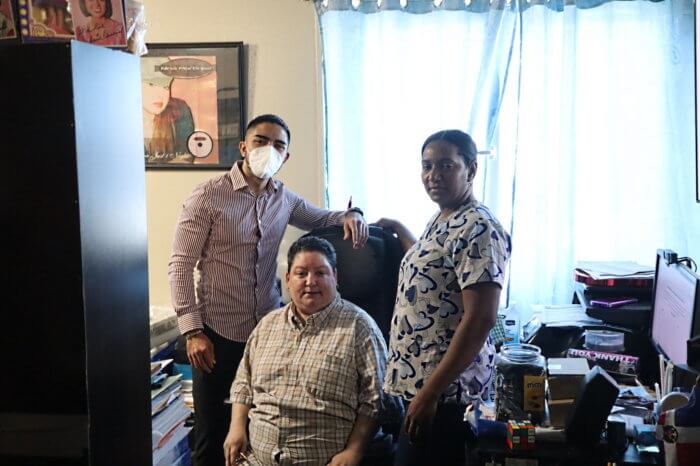
And their providers are underpaid and overworked, and have seen a mass exodus of nearly 20% from the industry. Burgos said that without meaningful change to the home care industry, it’s a system of the “vulnerable leading the vulnerable.”
“Aging is something that we’re all guaranteed to go through, and as our bodies break through simple tasks become difficult and it becomes difficult to live alone,” said Burgos. “That’s why there is a need for home care workers. But now imagine that that person who assists you, can’t assist themselves and is one pay check away from homelessness.”
The Fair Pay Act would annually net more than $3.6 billion for the state and would quickly eliminate the labor shortage – generating tens of thousands of new jobs for a workforce that is currently 90% women, 67% immigrants, and 75% women of color, according to a March 2021 CUNY report.
“Stimulus policies with a high bang for their buck deliver resources quickly, and to the households most likely to need help making ends meet and so will quickly spend rather than save any additional dollar they receive,” the report stated.
In 2020, 76% of home care agencies were forced to delay or deny new consumers because of the workforce shortage.
Reach Robbie Sequeira at rsequeira@schnepsmedia.com or (718) 260-4599. For more coverage, follow us on Twitter, Facebook and Instagram @bronxtimes.

